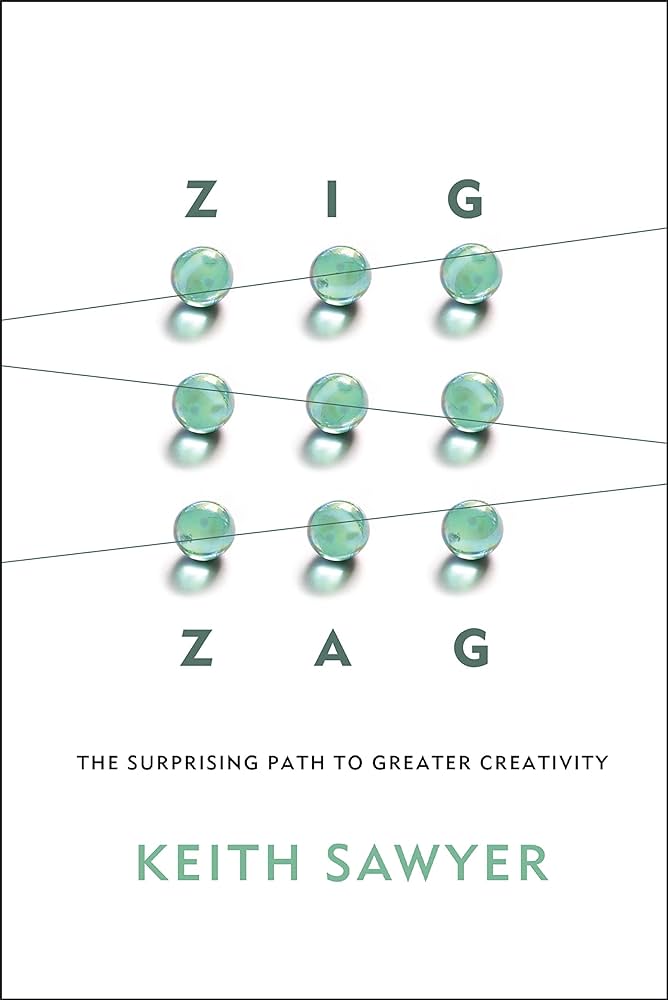In Zig Zag: The Surprising Path to Greater Creativity, Creativity, and Innovation Researcher Keith Sawyer identifies the eight stages of the creative process and contains over 100 techniques to enhance your personal creativity.
Neuroscience and psychology have proven that all human beings unless their brain has been seriously damaged, possess the same mental building blocks that inventive minds stack high to produce works of genius. That creative power you find so breathtaking when you see it tapped by others, lives just as surely within you. You only have to take out those blocks and start playing with them.
The Eight stages of the creative process
1. Ask. Creativity starts with a penetrating research question, a startling vision for a new work of art, an urgent business challenge, a predicament in your personal life. Mastering the discipline of asking means you’re always looking for good problems, always seeking new inspiration. You know where you’re going, and yet you’re receptive to questions that emerge unexpectedly.
2. Learn. In a creative life, you’re con- stantly learning, practicing, mastering, becom- ing an expert. You seek out knowledge not only in formal classrooms but also from men- tors, experts, books, magazines, film, Web sites, nature, music, art, philosophy, science.
3. Look. You are constantly, quietly aware. You don’t just see what you expect to see. You see the new, the unusual, the surprising. You see what others take for granted, and what they incorrectly assume. You expose yourself to new experiences eagerly, without hesitation; you regularly seek out new stimuli, new situations, and new information.
4. Play. The creative life is filled with play—the kind of unstructured activity that children engage in for the sheer joy of it. You free your mind for imagination and fantasy, letting your unconscious lead you into un- charted territory. You envision how things might be; you create alternate worlds in your mind.
The debt we owe to the play of imagination is incalculable. – Carl Jung
5. Think. The creative life is filled with new ideas. Your mind tirelessly generates possi- bilities. You don’t clamp down, because you realize most of these ideas won’t pan out—at least not for the current project. But suc- cessful creativity is a numbers game: when you have tons of ideas, some of them are sure to be great.
6. Fuse. Creative minds are always bounc- ing ideas together, looking for unexpected combinations. Successful creativity never comes from a single idea. It always comes from many ideas in combination, whether we recognize them or not. The creative life doesn’t box its concepts into separate compartments; it fuses and re-fuses them.
7. Choose. A creative life is lived in balance, held steady by the constant tension between uncritical, wide-open idea generation (brain- storming, done right) and critical examination and editing. Choosing is essential, because not all ideas and combinations are ideal for your purposes. The key is to use the right cri- teria to critique them, so you can cull the best and discard any that would prove inferior, awkward, or a waste of your time.
8. Make. In the creative life, it’s not enough to just “have” ideas. You need to make good ideas a reality. You continually externalize your thoughts—and not just the polished, finished ones. You get even your rough-draft, raw ideas out into the world in some physical form, as quickly as possible. Making—a draft, a drawing, a prototype, a plan—helps you fuse your ideas, choose among them, and build on what you like.
All the best in your quest to get better. Don’t Settle: Live with Passion.



Comments are closed.